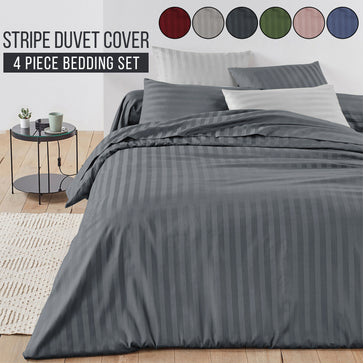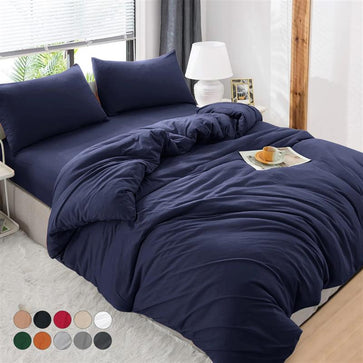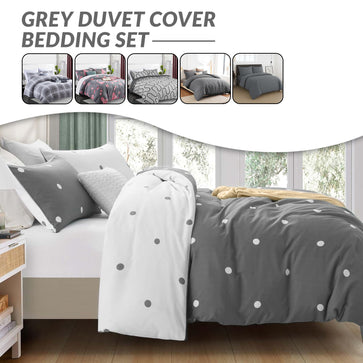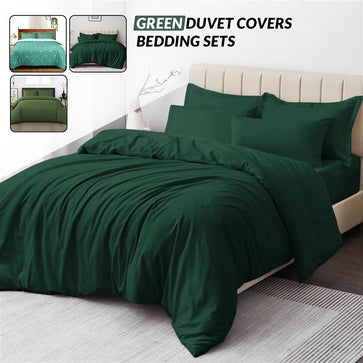How To Keep Your Duvet From Sliding Within The Duvet Cover
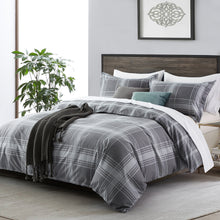
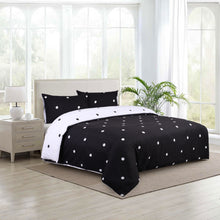
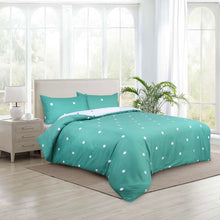
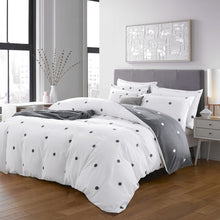
The Causes Of Your Duvet Slipping Out Of Its Cover
Your duvet shifts along with you throughout the night as you toss and turn in bed, and this movement has the potential to separate the fill from the cover of the duvet.

Because the duvet must accommodate the movement of two persons simultaneously within the bed, the likelihood of this happening increases if you share your bed with another person. When we get into bed, we tend to pull the sheets and blankets towards our faces, which can also make the cover detached from the duvet.
Also Read: How Do You Make A Printed Duvet Cover Look Nice?
Make Use Of Grips Or Duvet Clips
Most duvet covers are constructed with little ties sewn into the inside corners. These ties are used to fix the corners of the duvet and stop them from moving about. It's possible, though, that your duvet cover needs to be more significant for your duvet or that your cover doesn't come with those ties. In such circumstances, one might take a few different approaches to secure a duvet cover.
The most convenient solution is to buy duvet clips or grips through an internet retailer or a chain department store. These have the advantage of being simple to apply; they will keep your rust colour duvet cover in place in a matter of minutes, and you don't need any creative expertise to do it.
Rubber that is both robust and rigid is used in constructing the duvet grips, a two-part system. The duvet is placed in the centre of the fabric with the grabs along both sides of the duvet, and the covering is snapped shut once the duvet's corner is inserted further into the matching side of the cover. The duvet clip is just a collection of locking clips that are frequently cushioned to prevent the fabric from being damaged.
The duvet is positioned by placing it on a red duvet cover, the wrong way around, turning the covering to ensure that the right side is showing, and then shaking the duvet till it is in the required location.
Despite the clips' more excellent durability, some people find they disrupt their sleep more than the grips do. On the other hand, the grips are attached on the outside, which may make them less appealing from an aesthetic standpoint. Consider both your personal tastes and the requirements of your home before deciding on a course of action.
You may also like to check out the Blossom Printed Duvet Cover Set in Ochre.
15% OFF
GET FLAT 15% OFF ON YOUR FIRST PURCHASE
Put On Your Own Knots And Rings
There is still hope, even if your microfiber duvet cover did not arrive with ties or if the ties need to be fixed. You can always put new ties within the duvet cover in order to fasten your duvet or comforter. This is an excellent option for DIY enthusiasts or frugal people who sleep in chilly weather. As long as the materials you use for sewing can be machine washed or are compatible with the washing instructions for your duvet cover, the vast majority of sewing supplies can be utilised for this project. When it comes to fastening straps, grosgrain ribbons, shoelaces, and Velcro are all excellent options.
You will need four lengths of your strap material measuring 17 inches, a sewing needle, and thread in the colour that matches your beige duvet cover if you choose to go with any of these options; however, using a sewing machine will always make these jobs simpler. By laying the duvet on top of the cover and calculating the size difference, you can find the sweet spot for your duvet and avoid a potentially unsettling asymmetrical arrangement.
Method For Ensuring Correct Duvet Cover Sizing

First Step:
Make sure that the length and width of your quilt are identical, or at least that the cover is significantly larger than the duvet contained within it. If you already own a duvet cover, you may check to see if the duvet and cover are the exact sizes by placing the duvet on top of the cover and then measuring the distance between the two.
Second Step:
Turn the duvet cover inside out by taking it apart at the seams.
Third Step:
After that, place your comforter or duvet on top of it.
Fourth Step:
Attach the duvet or comforter to the corner ties to stay in place. To accomplish this, you will need to insert your duvet ties into the end edges of your duvet and tie them into a knot.
Fifth Step:
When you are confident that the duvet is securely fastened to the cover, you can turn the duvet over so that the original side is facing out and then get ready for bed.
When your strategies are to keep your duvet in place, one other thing to remember is to look for duvet covers that wither closures. This closure also helps ensure that your duvet will remain in place for a more extended period and will not escape from its cover while you sleep.
The most effective solution is to use duvet ties, particularly if you have a large king-size bed and comforter. Other duvets have button closures included in the package. Nevertheless, the zipper closure is the more dependable choice for maintaining the integrity of your comforter. This prevents your duvet from becoming soiled and wards off germs for a more extended period.
You may also like to check How Do You Best Use A Duvet Cover.
You can put those sleepless nights spent battling cold spots in your past with just a few easy steps. Oxford Homeware has a wide variety of high-end options for white stripe duvet covers, including fabrics, patterns, and hues, so you can get the one that's just right for you.

